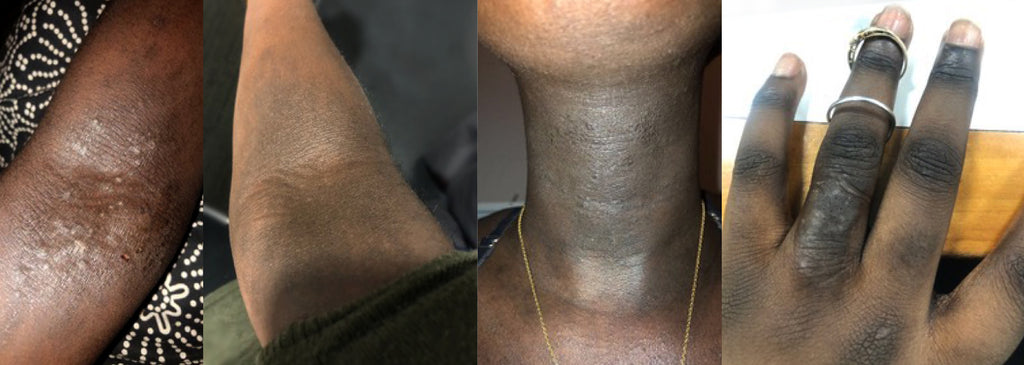You may have heard of post-inflammatory hyperpigmentation but how would you recognise it yourself? We explore post-inflammatory hyperpigmentation (PIH for short) and what it looks like.
First up, it’s important to know that PIH manifests differently on different people.
Skin colour matters: any description of appearance needs to make it clear that PIH on skin of colour won’t look like PIH on white skin. PIH on people of colour is more likely to be more severe and last longer, but there are fewer representations of the condition on BAME skin on websites, despite studies showing that 65% of African Americans have experience it.
People of colour might encounter lack of knowledge about PIH from doctors or dermatologists, who may have only learnt about PIH from textbooks or online resources without adequate and comprehensive images of PIH on different skin colours.
PIH is characterised by a difference in colour: it can be blotchy, look like small spots, or cover a more widespread area, but it is more noticeable the greater the difference between the traumatised area and the original skin tone and colour.
Where PIH appears will depend on what caused the damage: if it was acne, it will appear on the face, if it was a burn or scratch, it’ll be where the injury occurred.
PIH tends to happen after flare-ups of acne, eczema or psoriasis, though it most often appears on someone who’s suffered from persistent acne, and can also occur after an injury or trauma to the skin, a burn or insect bite.
It can range in colour from dark blotchy brown or black, purple, beige, pink or white, depending on your own skin colour and the severity of the inflammation.
PIH is flat on the skin, unlike other similar scars, skin conditions or markings; it’s a discolouration of the skin, not pitted or raised.

(Images of post-inflammatory hyperpigmentation copyright Alaa Hassan.)
For more information on post-inflammatory hyperpigmentation, see our blog What Is Post-Inflammatory Hyperpigmentation? or read Alaa Hassan’s personal experience of PIH in her article Post-Inflammatory Hyperpigmentation, Eczema & Me
Recommended products:
Balmonds Skin Salvation with hemp, beeswax & calendula, to nourish and moisturise skin during an inflammatory episode (from £7.99 for 30ml)
Balmonds Daily Moisturising Cream with shea butter & hemp seed oil, for daily maintenance of dry or sensitive skin (from £13.99 for 100ml)
Balmonds Rosehip Scar Oil with rosehip, palmarosa, lavender & chamomile, for long-term application to improve the appearance of uneven or hyperpigmented skin tone (£18.99 for 50ml)

